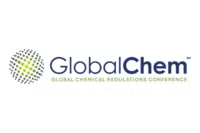Defining Cumulative Risk
Cumulative risk can mean different things in different contexts. It can mean considering potential risks from pesticides that act by a common mechanism of toxicity1 or from chemical mixtures or all chemicals to which people are exposed. Increasingly, the term cumulative risk has evolved to include risks from non-chemical stressors, such as physical and social factors, which are combined with potential risks from chemicals.2 This latter definition is related to cumulative impacts, which the Environmental Protection Agency (EPA) defines as “…the totality of exposures to combinations of chemical and non-chemical stressors and their effects on health, well-being, and quality of life outcomes."3 For the purposes of this post, both ‘cumulative impacts’ and ‘cumulative risk’ mean that both chemical and non-chemical stressors are assessed.
The Science for Assessing Cumulative Risk Isn’t There Yet
One year ago, we stressed sound science must be the basis for assessing cumulative risk and noted the science to do so hasn’t been developed yet. The EPA’s EJ Screen and Risk-Screening Environmental Indicators (RSEI) tools don’t, in fact, assess cumulative risk and caution is warranted when interpreting the results from screening-level tools like these and potential cumulative risk.
There has been an increasing focus on environmental justice (EJ) and on the potential cumulative impacts and risks faced by some communities. However, there are still fundamental questions that need to be answered before a science-based cumulative risk assessment framework can be applied for regulatory use. To this end, EPA wisely held a Science Advisory Board Meeting in the Spring of 2022 to inform the research needed to provide the scientific methodology necessary for incorporating chemical and non-chemical stressors.4 More recently, EPA released its Final Report, which notes that “To support federal, state, tribal, and community decision-making, ORD must strengthen the scientific foundation for assessing cumulative exposures, impacts, and risks through existing and new methods, tools, data, and monitoring.”5
Public Health Assessments are not Political Experiments
While some organizations have so far shown appropriate restraint, consistent with the state of the science, other regulatory authorities are leaping ahead and substituting policies informed by politics, not science. Basing policies on oversimplistic inferences is no substitute for evidence-based public health policy. Often, there is an implicit assumption that the mere presence of a chemical (or chemicals) in a community experiencing disproportionate adverse health impacts necessarily means that the chemical(s) caused or intensified those adverse health impacts, even when a causal relationship has not been established.
The State of New Jersey’s recently proposed rulemaking for basing permitting decisions on an arbitrary and simplistic interpretation of cumulative impacts is such an example. We challenge those who consider New Jersey’s proposed new regulations to be ‘progress’ and a move in the right direction to reevaluate this approach. They should consider that the lack of a risk-based approach rooted in sound science means that it will be impossible to: 1) determine which adverse health effects observed in a community are caused by which chemical or non-chemical stressors; 2) measure the magnitude of the health effects that have been determined to be caused by different chemical/non-chemical stressors; 3) identify which communities have elevated health risks that could actually be mitigated by regulatory actions; and 4) measure the magnitude and direction (positive or negative) of the impact of regulatory actions on improving public health to determine if regulatory actions are effective.
Social Inequities, Chemicals, and Public Health
It is important to recognize that social inequalities themselves impact health and that socioeconomic factors (in addition to access to healthcare) likely influence health outcomes.6 In the medical community, these are referred to as the social determinants of health, which can overlap with metrics selected for cumulative impacts.
What isn’t known is if (or if so, to what extent) chemical exposures interact with these non-chemical stressors to increase or decrease disease incidence and/or severity. It is only through the scientific method that the root causes and proportionate contributions to adverse human health impacts of chemical and non-chemical stressors can be determined and applied to guide evidence-based public health policies. While the Toxic Substances Control Act (TSCA) doesn’t require EPA to consider cumulative risk in risk evaluations, it doesn’t prohibit the agency from doing so, either. Notably, consideration of cumulative risk by EPA would have to meet TSCA’s rigorous scientific standards.
Increasing Transparency and Efficacy in Public Health
At the end of the day, the goal of considering cumulative impacts and conducting cumulative risk and impact assessments is to protect public health. Health is too important to rely on policies and regulations built on politics and that are not adequately informed by the best available and most relevant science. This stays true even when these regulations and policies are crafted with the very best of intentions.
Let us re-calibrate our good intentions and channel them in the direction of science to help get to the root causes of disease inequalities. Regulators must transparently peer review and adequately validate cumulative impact and risk assessment methods prior to applying them. Regulators also must seek to fund the research needed to ensure that the policies and laws being implemented meet statutory standards, make effective use of public resources, and actually protect people.
_______________________________________
[1] Guidance on Cumulative Risk Assessment of Pesticide Chemicals That Have a Common Mechanism of Toxicity. Office of Pesticide Programs U.S. Environmental Protection Agency Washington, D.C. 20460 January 14, 2002. https://www.epa.gov/sites/default/files/2015-07/documents/guidance_on_common_mechanism.pdf
[2] Framework for Cumulative Risk Assessment. EPA/630/P-02/001F May 2003. https://www.epa.gov/sites/default/files/2014-11/documents/frmwrk_cum_risk_assmnt.pdf
[3] U.S. EPA. Cumulative Impacts Research: Recommendations for EPA’s Office of Research and Development. U.S. Environmental Protection Agency, Washington, D.C., EPA/600/R-22/014a, 2022. Page vii. https://www.epa.gov/system/files/documents/2022-09/Cumulative%20Impacts%20Research%20Final%20Report_FINAL-EPA%20600-R-22-014a.pdf
[4] Cumulative Impacts: Recommendations for ORD Research. United States Environmental Protection Agency Office of Research and Development January 2022. https://www.epa.gov/system/files/documents/2022-01/ord-cumulative-impacts-white-paper_externalreviewdraft-_508-tagged_0.pdf
[5] Reference 3, page 2.
[6] Braveman & Gottlieb. “The Social Determinants of Health: It’s Time to Consider the Causes of the Causes”. Public Health Rep. 2014;129 Suppl 2(Suppl 2):19-31. doi:10.1177/00333549141291S206, https://www.ncbi.nlm.nih.gov/pmc/articles/PMC3863696/).



